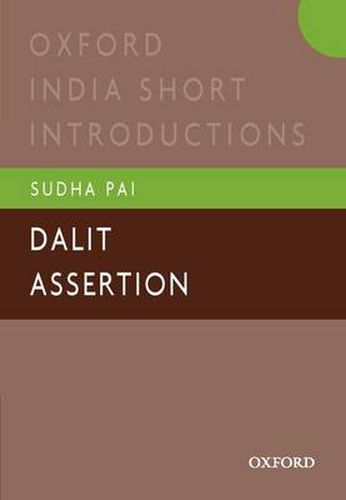Readings Newsletter
Become a Readings Member to make your shopping experience even easier.
Sign in or sign up for free!
You’re not far away from qualifying for FREE standard shipping within Australia
You’ve qualified for FREE standard shipping within Australia
The cart is loading…






This particular title analyses the phenomenon of Dalit assertion that India has experienced in recent decades. Arguing that it is a part of the larger process of democratization since Independence and an upsurge from below that has constructed a new identity of the Dalit, alternative ideology of Ambedkarism and questioned the hierarchical caste structure, which has historically oppressed the former untouchables. It discusses three forms that Dalit assertion has taken: grassroots assertions, political parties, and more recently, middle-class activism. Assertion has raised political consciousness, enabled greater political participation, but not unity, and often led to violent caste atrocities against Dalits, particularly by the backward castes, in many states/regions.
The nature and form of Dalit assertion has been a source of considerable controversy. While scholars have held that it has led to social deepening of democracy; questions have been raised about its role in empowering Dalits. This Short Introduction argues that the Dalit movement is in a phase of transition in which it has been able to question, with some degree of success, but not overcome upper caste domination and oppression and introduce transformation. While highlighting the achievements of Dalit assertion, this work also discusses its weaknesses, limitations, and possibilities.
$9.00 standard shipping within Australia
FREE standard shipping within Australia for orders over $100.00
Express & International shipping calculated at checkout
This particular title analyses the phenomenon of Dalit assertion that India has experienced in recent decades. Arguing that it is a part of the larger process of democratization since Independence and an upsurge from below that has constructed a new identity of the Dalit, alternative ideology of Ambedkarism and questioned the hierarchical caste structure, which has historically oppressed the former untouchables. It discusses three forms that Dalit assertion has taken: grassroots assertions, political parties, and more recently, middle-class activism. Assertion has raised political consciousness, enabled greater political participation, but not unity, and often led to violent caste atrocities against Dalits, particularly by the backward castes, in many states/regions.
The nature and form of Dalit assertion has been a source of considerable controversy. While scholars have held that it has led to social deepening of democracy; questions have been raised about its role in empowering Dalits. This Short Introduction argues that the Dalit movement is in a phase of transition in which it has been able to question, with some degree of success, but not overcome upper caste domination and oppression and introduce transformation. While highlighting the achievements of Dalit assertion, this work also discusses its weaknesses, limitations, and possibilities.